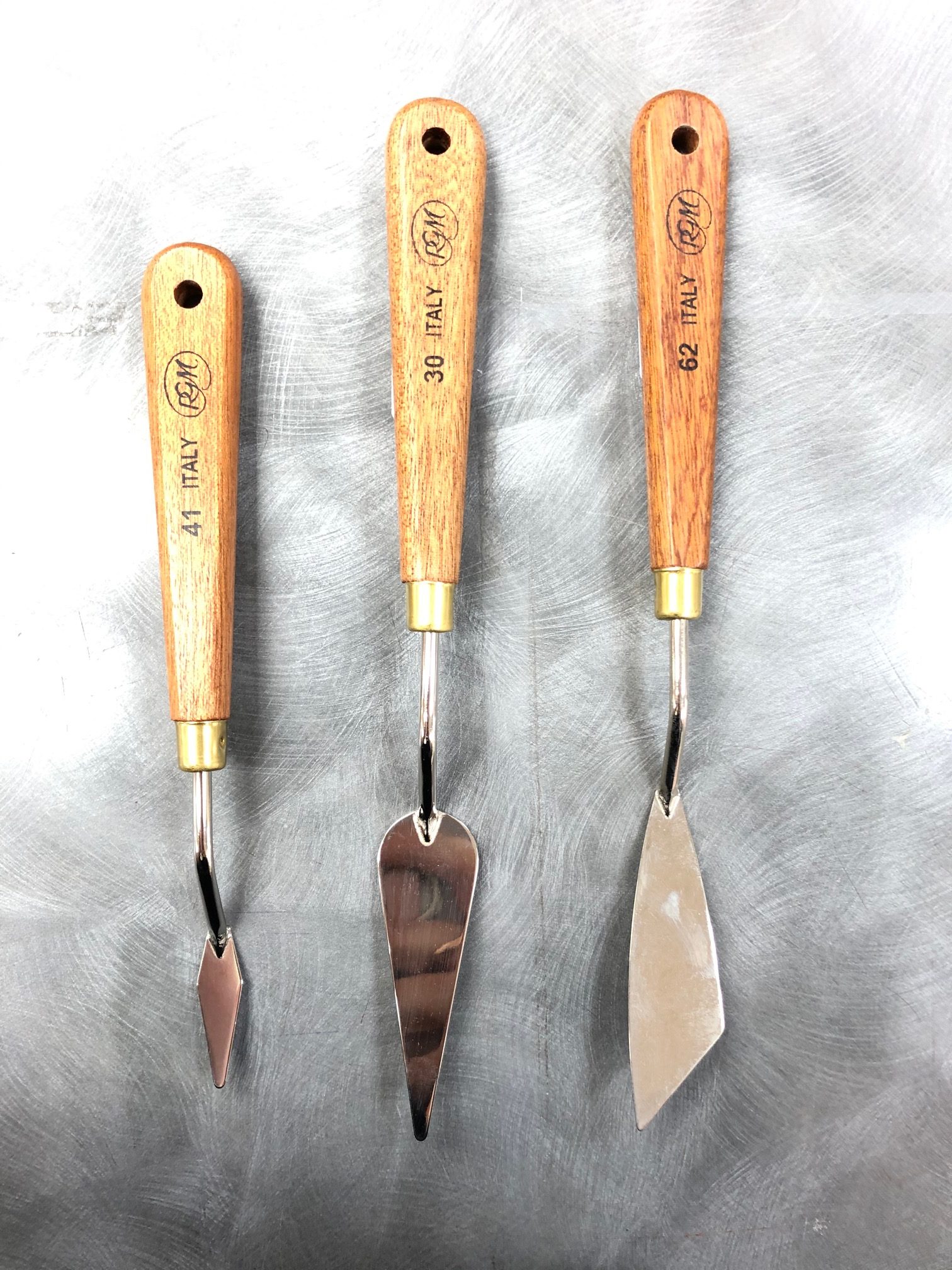Palette knives and painting knives are very similar and can be used for mixing paint or applying paint to a canvas, however there are some subtle differences between the two.

A palette knife will generally have a straight handle or one with a very small bend in and is ideal for mixing paint on a palette or plate so you can effectively mix your colours and scrape paint off your palette.

A painting knife will have a larger bend in the handle to allow the artist to comfortable hold the knife when applying paint to a board of canvas and ensuring that their knuckles do not get in the way and smudge any of the paint already laid down.
Palette knives often come with a metal end which allows for more freedom of movement with the knife blade and you will find the blade has more of a spring to it. You can purchase inexpensive plastic knives but they may not work as effectively for you depending on the techniques you are using and the effect you want to achieve.
To effectively use a palette knife thick paint is desired (a heavy body acrylic or an oil paint) so that the paint can hold its shape when moved about with the knife.

Large knives with a long, flat side (number 30) are great for laying on large areas of paint and getting smooth, flat areas of colour. You can use the slightly pointed end to add a bit of texture into the paint. Using this knife on the side would also allow you to add in straight lines for instance to indicate trees.
A knife such as number 62 would be great for mixing paint on a palette and then applying to your canvas after, it has a good sized blade with a wider end that means you can mix paint easily and then apply paint, using the pointed end for finer details.
Smaller knives (number 41) are great for adding in fine details and texture in your painting. They may not be as ideal for mixing colours as the blades are very small and these would definitely not work so well for applying large areas of paint onto a canvas, again due to the size of the blade.
Which palette or painting knife will suit you best is partially down to personal preference, if you are wanting to cover larger surface areas then go for a larger knife with a long flat side, if you want to get texture and fine detail into your painting use a smaller knife, however many of the knives will have multiple uses and effects you can achieve with them.
Feel free to pop into one of our stores and have a test of the wonderful spring the RGM palette knives have in their blades.

